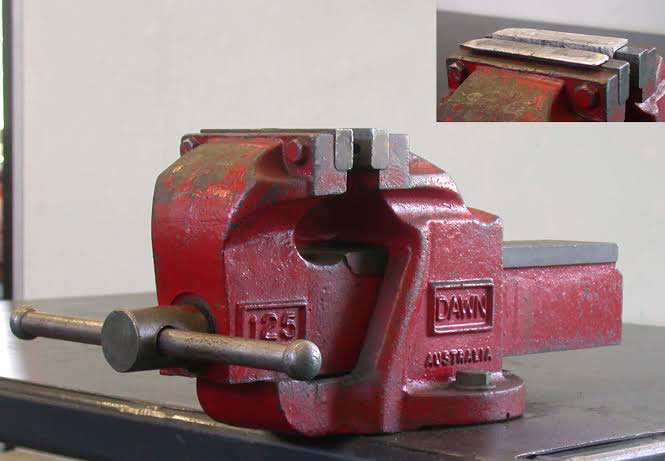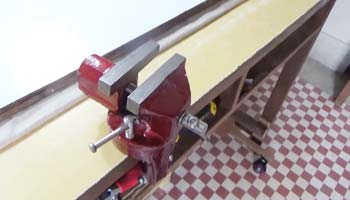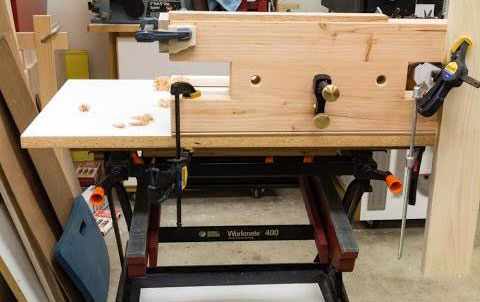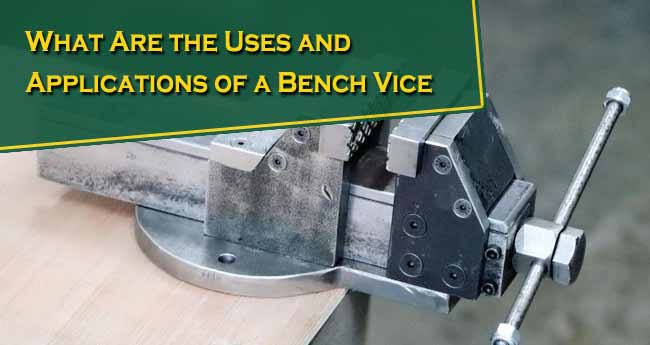If you’ve done any kind of crafting on a workbench, be it with wood, metals, or any other material, you’ll know how important stability is for getting the job done. No matter how skilled you are, without enough stability provided, you won’t be able to work with precision.
And that’s where the bench vice comes in. The bench vice is an amazingly versatile tool that allows you to hold a workpiece securely in place. But that’s not all it does. Wondering what the uses and applications of a bench vice are? Well, stick with us to find out!
While bench vices are well known for being versatile tools, they are often underestimated. And with this article, we hope you’ll realize how useful this tool is and use it to your advantage.
What Are Bench Vices?
First of all, we need to answer the fundamental question of what this tool is. You might have heard people often refer to bench vices as engineer’s vices or woodworking vices. These are either made of metal or wood and can be used for planning, drilling, and sawing wood pieces.

With the help of this tool, you can hold the wood piece or object underneath and work on it with a proper grip. As they provide a tight hold and secure the object in place, it reduces the hassle of crafting and risks of accidents. Whether you are a hobbyist or professional craftsman, you’ll find this item a handy tool, no doubt.
There are various types of bench vices like – pipe vices, clamp-on vices, swivel base bench vices, etc. It’s usually attached directly to the bench you use. This consists of several parts of which the main one is a set of jaws that holds the piece firmly.
There’s usually a fixed jaw and a dynamic one that’s moveable along with the table. While many of these vices come attached, you can, in some cases, detach them from the table as well.
Different Types of Bench Vices
There is a good variety of this tool available in the market for you to try out. As it is an integral part of various types of carpentry works, it’s no surprise that the variation is mostly dependent on work purpose and product material.
Just as you struggle to choose one of the good router tables for yourself, it’s also a challenge to pick a bench vice that is perfect for you.
To make sure you don’t struggle in the process, here are some of the most popular ones in a nutshell –
- Heavy-Duty Vices
- Pipe Vices
- Hinged Vices
- Chain Vices
Bench Vice Uses and Applications
Out of all the versatile uses, some major ones that you should keep in mind while getting a bench vice are listed here.
1. While Sanding

Any project requires one to put in certain finishing touches such as sanding and burnishing. This step isn’t usually a choice but rather an obligation to make a quality product. But almost every woodworker will agree that sanding takes time and is a lot of hard work.
So, you can use your bench vice to make things a bit easier for yourself. These tools hold the product firmly in place so you can channel all of your energy in actually rubbing the sandpaper properly.
No one needs to worry about the wood plank sliding off or the angle being wrong. It gives you the maximum output of your efforts while saving you some valuable time.
2. While Sawing
For any of you craftsmen out there, using saws is surely a tough job. Most of the times, you need to balance holding your lumber in place while sawing away. Simply put, it’s a hassle to deal with. It can even get dangerous sometimes for beginners trying to cut their wood pieces by themselves.

This is where tools like vices come in to save the day. Since they provide a solid grip and you don’t have to hold onto the piece, it’s perfect for sawing. They provide a reliable way to sawing your lumber piece easily without the struggle.
3. Drilling
Drilling is no easy task. If you’re doing work with wood or metals, you might need to use drills quite a lot. But without the help of a bench vice, you won’t make the holes as accurately.
For precise and accurate holes to help finish your project, a bench vice will assist the action of drilling until the end. And you’ll be able to get accurate results.
4. Conduit Cutting
Conduits are usually used to protect electrical wiring or cables. You can cut electrical conduits in a certain way using the help of bench vices. It will keep the wire in place, and you don’t have to worry about mixing up wires either.

Most woodworking benches have a bench vice since wires are often required in the projects both for aesthetics and functionality. So, even when building that electric box and managing your house cables, you can use this tool to cut and prepare the conduits accordingly.
5. While Gluing
Anyone who has done any DIY project will know the perils of gluing things together by mistake. A mistake here and a quick fix there, and all of a sudden, you’ve glued your hands together! To avoid these, it’s best to get some help from a bench vice tool.
Since wood glue is so strong, it’s a big hassle when you mess up putting parts together with it. The best way to glue wood pieces together is by attaching one to the bench vice securely, putting glue on it, and then fixing the other piece to it till they dry.
Since the jaws of the tool are very tight, it’ll hold the pieces together and help retain their proper shape. Besides, it’s a whole less messy.
6. Doing Metalwork
Despite being widely used by woodworkers, a bench vice isn’t necessarily meant for just woodworking. You can use it while doing projects with metal and other materials too.
These can hold metals together as you cut and give them shapes. Since one end of the metal can be attached to the vice and kept secured, you can easily cut the other end.
7. Basic to Pro Level Woodworks
A regular bench vice comes in handy in almost any project a carpenter takes up. Having one attached to your workbench might be nice, but on its own, a bench vice is still very useful.
You’ll be able to get the same type of work done with it even if you don’t have a proper workbench. From the very basic works to projects on a professional level, this tool acts like a charm.
If you are willing to give up enough space for it being attached to your worktable, you can experience its benefits first-hand. You might even find your bench vice to be a proper replacement for a regular woodworking table.
Final Words
Not many tools out there provide as much versatile use as the bench vice. So, when it comes to putting together a workbench, installing one is sure to benefit you for years to come. After all, the uses and applications of a bench vice are far from being limited.
Recommended Article To Read:
- How to Keep Proper Height in Your Work Bench?
- Furniture Sliders for Hardwood Floors: Check Out Top Lists

